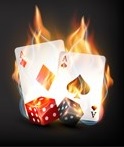
|
| Новости | Форумы | Путеводитель | FAQ (RPG) | Библиотека | «Пролёт Фантазии» | «Штрихи Пролёта» | Дайсы |
 Список форумов · Кладбище · Городское кладбище · Место Действия: Рай
Список форумов · Кладбище · Городское кладбище · Место Действия: Рай | Здравствуй, Гость (Вход · Регистрация) |
Ответ Новая тема Опрос |
| ||||||||
| ||||||||
| ||||||||
0 Пользователей читают эту тему (0 Гостей и 0 Скрытых Пользователей);
Ответ Новая тема Опрос |
 Список форумов · Кладбище · Городское кладбище · Место Действия: Рай
Список форумов · Кладбище · Городское кладбище · Место Действия: Рай | Здравствуй, Гость (Вход · Регистрация) |

